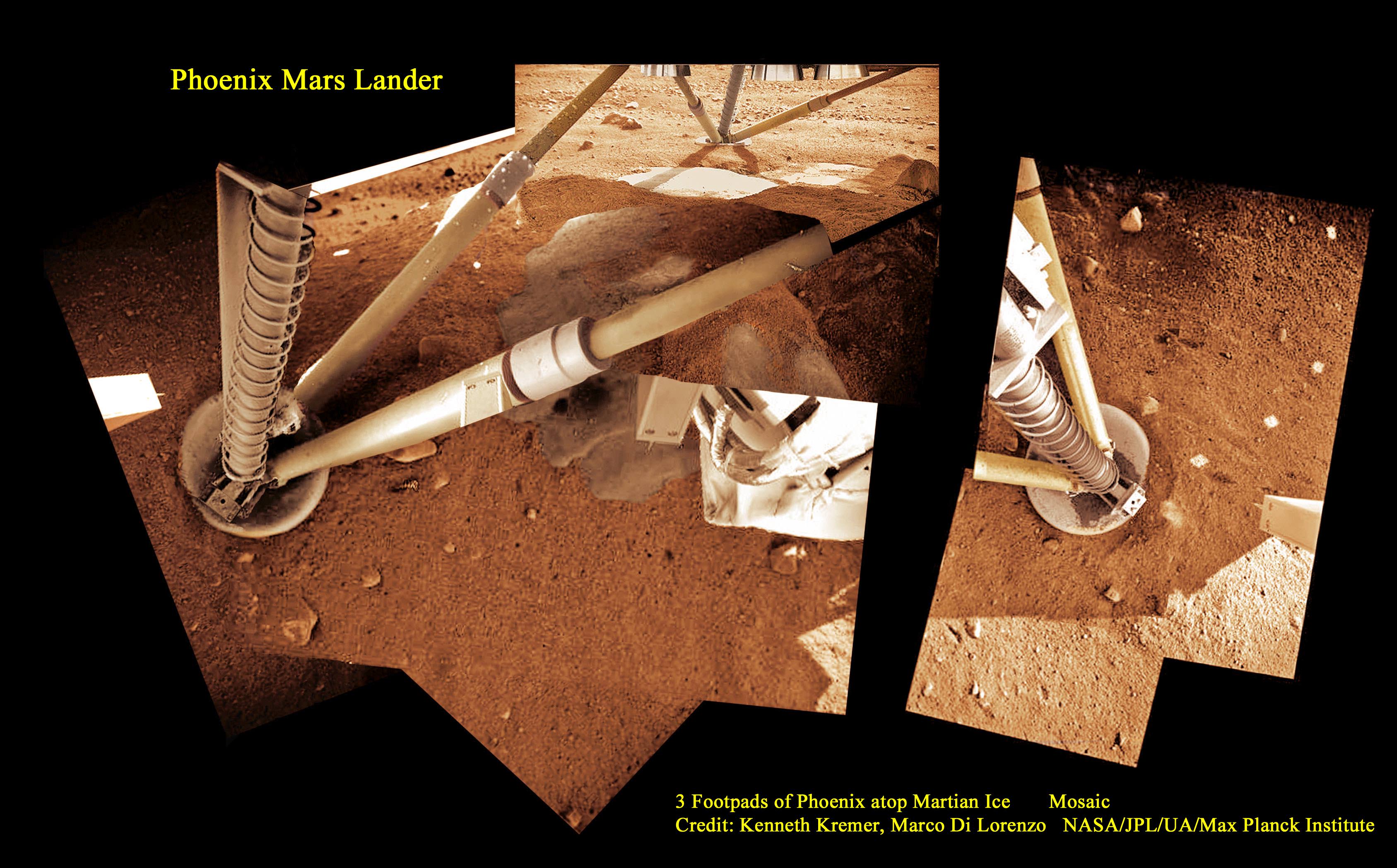[/caption]
Well my original thought for this piece was, “Last Chance for Phoenix”, since the third and final chance for NASA to reestablish radio contact with the long silent Phoenix Mars Lander was coming up soon on April 5 to 9.
Instead I was pleasantly surprised to just learn from the director of NASA’s Mars Program that NASA is seriously entertaining the idea of extending the listening campaign for Phoenix into May 2010. NASA’s first two listening campaigns in January and February 2010 failed to detect even a hint of a radio signal from the hugely successful Phoenix lander.
“NASA is considering the possibility of adding one final campaign, right around the summer solstice for the northern hemisphere of Mars, which occurs on May 13,” says Doug McCuistion, the director of Mars Exploration at NASA Headquarters in Washington, DC. “This would offer the best possible power/thermal conditions”, McCuistion told me in an interview.
“A final decision regarding this additional campaign will be made after completion of the April 5-9 campaign”, McCuistion said.
The 2010 listening campaign was timed to coincide with the onset of springtime and disappearance of ice at her location in the martian north polar regions. Theoretically the return of plentiful sunlight impinging onto the power producing solar arrays would reawaken the long dead robotic explorer.
“NASA has completed two campaigns of listening for the Phoenix Lander with the Odyssey orbiter – the first in January and the second in February”, McCuistion explained to me.
“During the five-day period of the second campaign of Feb 22-26, Odyssey passed over the Phoenix site 60 times, configuring its UHF relay radio to listen for any transmission from the surface”.
“In the unlikely event that the lander had returned to an operational, energy-positive condition after the Martian winter, it would have been in a state where it would awaken periodically and transmit to any orbiters in view, with a very high likelihood that one of those transmissions would have occurred during one or more of the 60 Odyssey overflights,” according to McCuistion.
“A third campaign is scheduled for early April (5-9), with improved power/thermal conditions as we approach summer in the northern hemisphere of Mars. For this third campaign, the sun will be continuously above the horizon at the high-latitude Phoenix site, corresponding to the solar illumination conditions just prior to Phoenix arrival at Mars as well as around sol 64 (within the primary 90-sol mission)” said McCuistion.
Phoenix set down successfully on the northern martian polar regions on May 25, 2008. During over five months of operations on top of the martian arctic plains, she made breakthrough science discoveries by finding patches of water and nutrients that could possibly sustain past or current martian life forms, if they exist.
Lets root for Phoenix !
Earlier Mars articles by Ken Kremer:
Spirit Freezing; We Will Move Her if We Can
Spirit Hunkered Down for Winter; Stuck Forever ? Maybe Not !
Phoenix Still Silent as Martian Ice Recedes


Odd that they didn’t set it to listen when awake and provide a simple response to a ping, waiting for it to call home when you aren’t always at the phone is torture.
I think its a good idea to continue listening… Phoenix got very very cold last winter. It may take longer to warm up than we thought?
Why can’t NASA design a simple cleaning system that removes the dust from their probes’ panels? Something like a wiper system? Seems like a prudent investment if possible.